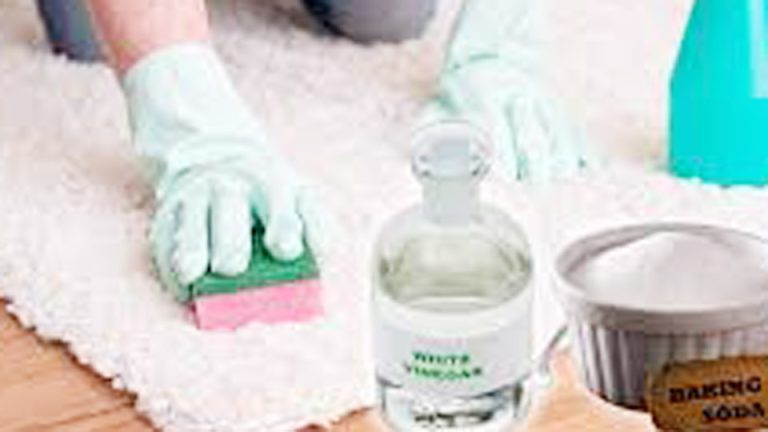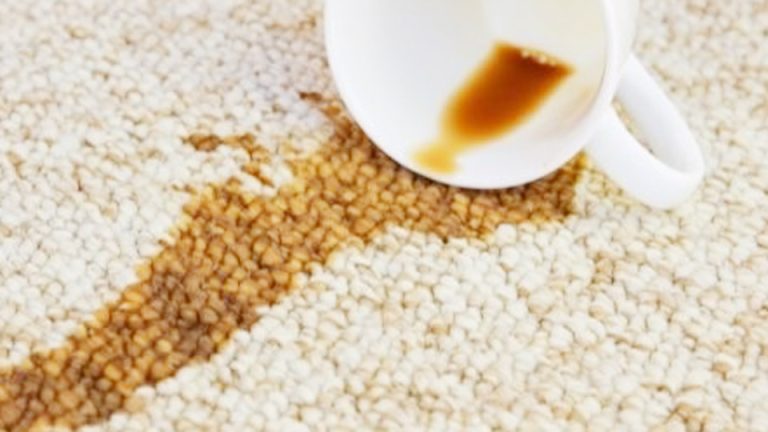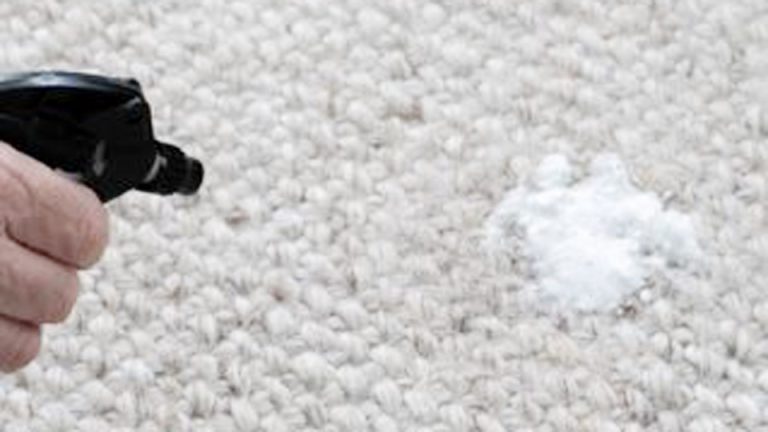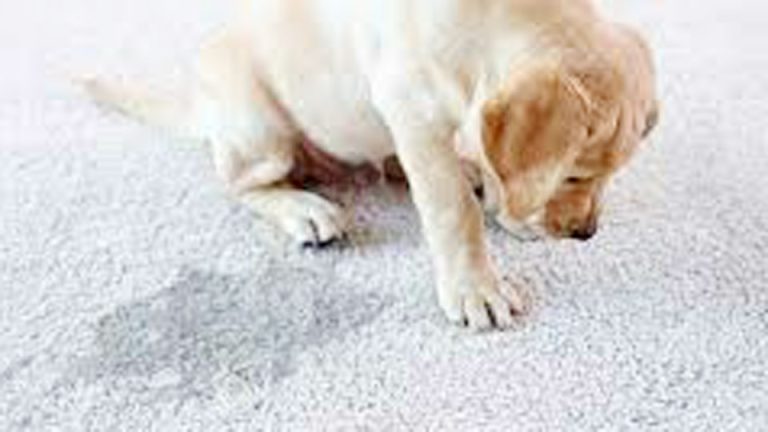Spilling something on your carpet is one of those heart-sinking moments we’ve all experienced. Whether it’s a splash of coffee during a hectic morning or a pet accident you didn’t catch right away, the urge to reach for a trusty cleaning solution like vinegar is strong. As a home cleaning expert who’s tackled countless carpet stains over the years, I get asked one question a lot: Can I leave vinegar on carpet overnight? It’s a fair question!
Vinegar is a natural, budget-friendly cleaner that works wonders, but leaving it on your carpet for hours isn’t always the best idea. I’ll share my personal experiences, step-by-step cleaning methods, and practical tips to help you use vinegar safely and effectively to keep your carpets spotless. Let’s dive in and answer that burning question while making your carpet care routine a breeze.

Image by carpetbright
Why Vinegar Is a Go-To for Carpet Cleaning
I fell in love with vinegar as a cleaning tool years ago when I spilled red wine on my favorite cream-colored rug. Panicked, I grabbed the white vinegar from my pantry, and it saved the day! Vinegar’s acetic acid makes it a powerhouse for breaking down stains, cutting through grease, and neutralizing odors.
It’s safe, affordable, and eco-friendly, which is why it’s a staple in my cleaning caddy. But while vinegar is fantastic for spot cleaning, leaving it on your carpet overnight can have some downsides, depending on your carpet type and the stain you’re tackling. Let’s explore when it’s okay to let vinegar sit and when you should rinse it off sooner.
Understanding Your Carpet’s Needs
Before we get into whether you can leave vinegar on your carpet overnight, let’s talk about your carpet. I’ve cleaned everything from plush shag to tightly woven Berber, and each type reacts differently to cleaning solutions. Here’s a quick rundown of common carpet types and how they handle vinegar:
Wool Carpets: These are delicate and sensitive to moisture and acidity. I’ve learned the hard way that too much vinegar or water can cause wool to shrink or lose its softness.
Synthetic Carpets: Nylon and polyester carpets are more durable and can usually handle vinegar well, but over-wetting can still lead to issues like mold.
Berber or Loop-Pile Carpets: These are prone to snagging, so you need to be gentle with any cleaning solution to avoid damaging the loops.
Light-Colored Carpets: These show stains easily, and vinegar can sometimes leave a slight residue if not rinsed properly, which can attract dirt.
Knowing your carpet type helps you decide how long vinegar can safely sit and how to proceed with cleaning. If you’re unsure, check the care label or test a small, hidden area first—I always do this to avoid surprises!
Can I Leave Vinegar on Carpet Overnight?
So, let’s get to the main question: Can I leave vinegar on carpet overnight? In my experience, the answer depends on a few factors, like the stain type, carpet material, and how you apply the vinegar. Generally, I don’t recommend leaving vinegar on your carpet overnight because it can lead to issues like:
Over-wetting: Carpets, especially thick ones, can trap moisture, which may cause mold or mildew if left damp for too long.
Residue Buildup: Vinegar can leave a sticky residue that attracts dirt, making your carpet look grimy over time.
Potential Damage: On delicate carpets like wool, prolonged exposure to vinegar’s acidity can weaken fibers or cause discoloration.
Lingering Odor: While vinegar’s smell fades as it dries, leaving it on overnight can make your room smell like a pickle jar for longer than necessary.
That said, there are situations where letting vinegar sit for a short period (think 10-30 minutes) is fine and even helpful, especially for tough stains like pet urine or wine. I’ll walk you through how to use vinegar safely and when to rinse it off to avoid any trouble.
Step-by-Step Guide to Spot Cleaning with Vinegar
Here’s my go-to method for using vinegar to spot clean carpets. I’ve used this process on everything from coffee spills to muddy paw prints, and it’s never let me down. Follow these steps for fresh stains, and I’ll cover set-in stains later.
Blot the Stain First
The moment a spill happens, grab a clean white cloth or paper towels. I always keep a stack of old washcloths handy for emergencies. Blot the stain gently—never rub, as that pushes the mess deeper into the fibers.
Keep blotting until you’ve soaked up as much liquid as possible. I once spilled a whole mug of tea on my living room carpet, and quick blotting saved me from a bigger headache.
Mix and Apply a Vinegar Solution
In a spray bottle, mix one part white vinegar with one part cold water. I prefer this 1:1 ratio because it’s strong enough to tackle stains but gentle enough for most carpets. Lightly spritz the stained area—don’t soak it, as too much liquid can seep into the carpet padding and cause mold.
Let the solution sit for 5-10 minutes to break down the stain. For greasy stains, like butter or salad dressing, I sometimes add a drop of mild dish soap to the mix for extra cleaning power.
Blot Again
After letting the vinegar sit, blot the area with a clean cloth to lift the stain. Work from the outside in to keep the stain contained. You might need to switch to a fresh cloth if the stain is large. I’ve found that patience here pays off—keep blotting until you see the stain fading.
Rinse Thoroughly
Here’s where I answer the overnight question: don’t let the vinegar sit for hours! After 10 minutes, rinse the area by spritzing it with plain cold water. Blot thoroughly to remove the vinegar and any loosened stain particles.
I learned this lesson after leaving vinegar on a carpet too long—it started to smell and felt sticky. Rinsing ensures no residue is left behind to attract dirt.
Dry the Carpet
Press a dry towel over the area to absorb moisture. I often place a heavy book on the towel for an hour to soak up every last drop. If you have a fan, set it up to blow air over the spot to speed up drying. Once it’s dry, vacuum the area to fluff up the fibers. Your carpet should look fresh and clean!
Tackling Set-In Stains with Vinegar
For older, dried stains, vinegar is still a champ, but you’ll need a slightly different approach. I once found a mystery stain under my couch—likely juice from a kid’s sippy cup—and this method worked wonders.
Loosen the Stain
Start by dampening the stain with cold water using a spray bottle. This softens the dried mess. Then, sprinkle a thin layer of baking soda over the stain. I love baking soda because it’s a gentle abrasive and odor neutralizer. Let it sit for a few minutes to start breaking down the stain.
Apply Vinegar and Let It Fizz
Spritz your 1:1 vinegar-water solution over the baking soda. You’ll see it fizz, which is the reaction that lifts the stain. I usually let this sit for 15-20 minutes for tough stains, but I avoid leaving it overnight to prevent moisture issues.
If the stain is really stubborn, I’ll gently work the solution in with a soft-bristled brush, but I’m careful not to damage the carpet.
Blot and Rinse
Blot the area with a clean cloth to lift the stain and residue. You might need to repeat the vinegar and baking soda steps a couple of times—I’ve done this for old pet stains, and it’s worth the effort. Once the stain is gone, rinse with cold water and blot thoroughly to remove any leftover solution.
Dry Completely
Dry the area with a towel, using pressure to soak up moisture. Set up a fan or open a window to help the carpet dry fully. Vacuum once it’s dry to restore the carpet’s texture. Your carpet will look revitalized, and that old stain will be history!
Comparing Vinegar to Other Cleaning Solutions
Vinegar is fantastic, but it’s not the only option for carpet cleaning. Here’s a table comparing it to other household solutions I’ve used, so you can see when it’s the best choice:
| Cleaning Solution | Pros | Cons | Best For |
|---|---|---|---|
| Vinegar + Water | Natural, effective on most stains, odor-neutralizing | Can leave residue if not rinsed, strong smell during use | Coffee, wine, pet stains |
| Dish Soap + Water | Cuts grease, safe for most carpets, readily available | May require multiple applications, can leave residue if not rinsed | Grease, food stains |
| Baking Soda | Absorbs odors, lifts dried stains, inexpensive | Messy if overused, not a standalone solution | Odors, dried stains |
| Club Soda | Good for fresh spills, minimal residue | Less effective on set-in stains, doesn’t tackle odors | Fresh spills, light stains |
Vinegar shines for organic stains like wine or urine, but for greasy messes, I sometimes pair it with dish soap for the best results.
When Is It Okay to Let Vinegar Sit Longer?
While I don’t recommend leaving vinegar on your carpet overnight, there are times when letting it sit for 15-30 minutes is beneficial. For example, pet urine stains often need a longer soak to neutralize odors. I’ve let vinegar sit for 20 minutes on a dog accident, and it worked like a charm. Just make sure to:
- Use a diluted solution (1:1 with water) to minimize acidity.
- Test a small area first, especially on wool or delicate carpets.
- Rinse thoroughly afterward to avoid residue.
- Dry the area completely to prevent mold.
If you’re tempted to leave vinegar on overnight because you’re busy, I get it—life gets hectic! But set a timer for 30 minutes max, and you’ll avoid potential issues.
Carpet Type Considerations
Different carpets react differently to vinegar, and I’ve learned to adjust my approach based on the material. Here’s what I keep in mind:
Wool Carpets
Wool is sensitive, so I use a weaker vinegar solution (1:2 with water) and never let it sit for more than 10 minutes. Over-wetting can cause shrinking, so I blot extra carefully.
Synthetic Carpets
Nylon and polyester are more forgiving, so you can use a standard 1:1 vinegar solution. Just ensure thorough drying to prevent mold in the padding.
Berber or Loop-Pile Carpets
These carpets snag easily, so I skip the brush and stick to blotting. A short vinegar soak (10-15 minutes) is usually enough.
Light-Colored Carpets
Light carpets show residue more, so I rinse twice to ensure no vinegar is left behind. A final vacuum with a sprinkle of baking soda keeps them bright.
Preventing Carpet Stains in the First Place
Once your carpet is clean, you’ll want to keep it that way. Here are my favorite preventative tips:
Act Fast on Spills
The sooner you tackle a spill, the less likely it is to set. I keep a cleaning caddy with cloths, vinegar, and a spray bottle near my living room for quick action.
Use Protective Mats
Place washable mats in high-spill zones, like near coffee tables or entryways. I have a cute mat by my couch that’s saved my carpet countless times.
Apply a Carpet Protector
A spray like Scotchgard creates a stain-resistant barrier. I apply it every six months, and it makes cleaning so much easier.
Vacuum Regularly
Vacuum weekly to prevent dirt from mixing with spills and creating tougher stains. I also sprinkle baking soda monthly to keep odors at bay.
Extra Cleaning Hacks I Swear By
I’ve picked up some tricks that make carpet cleaning even easier:
Ice for Sticky Messes: For gum or candy, place ice cubes on the spot to harden it, then scrape gently before applying vinegar.
Baking Soda Boost: For odors, sprinkle baking soda after rinsing vinegar, let it sit for 10 minutes, then vacuum.
DIY Spray Bottle: Keep a pre-mixed vinegar-water solution (1:1) in a spray bottle for instant spot cleaning.
Final Thoughts
Cleaning your carpet with vinegar doesn’t have to be stressful, and now you know the answer to Can I leave vinegar on carpet overnight?—it’s usually best to rinse it off after a short soak.
With my step-by-step guide and a little patience, you can tackle any stain and keep your carpets looking fresh. Staring down a stubborn spill, and these methods have never let me down. Your home deserves to shine, and you’re more than capable of making it happen.
Frequently Asked Questions
Is it safe to leave vinegar on my carpet for a few hours?
I don’t recommend leaving vinegar on for hours, as it can leave a residue or cause moisture issues. A 10-30 minute soak is usually enough for most stains, followed by thorough rinsing and drying.
Will vinegar damage my wool carpet if left on too long?
Wool is delicate, and prolonged exposure to vinegar’s acidity can weaken fibers or cause discoloration. I stick to a short 10-minute soak with a diluted solution and rinse thoroughly.
Can I use vinegar on pet stains without rinsing?
For pet stains, vinegar is great for neutralizing odors, but I always rinse after 15-20 minutes to avoid residue that could attract dirt. Drying completely is key to prevent mold.
Does vinegar leave a smell on carpets?
Vinegar has a strong smell while wet, but it fades as the carpet dries. I speed up drying with a fan to minimize the odor, and a sprinkle of baking soda helps neutralize it.
What if my carpet feels sticky after using vinegar?
Stickiness usually means leftover residue. I rinse the area with cold water and blot thoroughly to remove it. If it persists, a mild dish soap solution can help, followed by another rinse.




